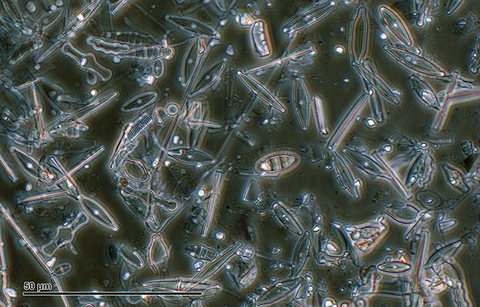Diatomaceous earth is environmentally friendly and easy for gardeners to find, but what is it? In what situations is it helpful in the garden?
There are many products designed for all kinds of situations that work because they contain diatomaceous earth. Diatomaceous earth is naturally occurring and found in underground deposits around the world. These deposits are made of fossilized diatoms, tiny organisms that are found in water.
After being mined, diatomaceous earth is used in many ways, including for pest control.
How does diatomaceous earth work?
While diatomaceous earth comes in a couple of different forms, whether it's in a powder or a liquid when it comes to controlling insects, the principle is the same.
Diatomaceous earth works when it comes into contact with insects. It doesn’t need to be eaten. Instead, insects and other arthropods need to put their bodies in direct contact with the diatomaceous earth. The product scrapes the insect, removing oils and fats from the outside of the insect’s body. The removal of these substances can cause the insect to dry out. The scrapes themselves can also aid in this drying and dying process.
What pests can it control?
Diatomaceous earth works best on insects and other pests that are softer bodied. It is most likely effective against soft-bodied pests like slugs, but unlikely to have a major impact on a large, hard-sided potato beetle or Japanese beetle. It can also work on pests that infest homes.
What does my garden need for diatomaceous earth to control pests?
Diatomaceous earth relies on insects drying out, so the whole process works best in dry environments. You need to reapply it after rain, watering, or dew exposure.
It also works best when it isn’t compacted, so again, rain or foot traffic will render it ineffective. Some studies have found that diatomaceous earth does very little in humid environments, meaning it may not perform well during Minnesota summers at all.
Is it effective at all in Minnesota?
While using diatomaceous earth can make you feel better than doing nothing, its success rate against many of Minnesota’s most annoying garden insects is low.
If you are using diatomaceous earth in your garden, make sure you read the label. While diatomaceous earth is a relatively safe product, it isn’t without risks; some formulations can be very irritating to your respiratory tract. Powdered formulations can be harmful if breathed in, and some formulations require a respirator. The label of the product will let you know what you need to do to use the product safely.
CAUTION: Mention of a pesticide or use of a pesticide label is for educational purposes only. Always follow the pesticide label directions attached to the pesticide container you are using. Be sure that the plant you wish to treat is listed on the label of the pesticide you intend to use. And observe the number of days between pesticide application and when you can harvest your crop. Remember, the label is the law.
Bunch, T. R.; Bond, C.; Buhl, K.; Stone, D. 2013. Diatomaceous Earth General Fact Sheet; National Pesticide Information Center, Oregon State University Extension Services. http://npic.orst.edu/factsheets/degen.html.
Zeni, Valeria, et al. "Diatomaceous earth for arthropod pest control: Back to the future." Molecules 26.24 (2021): 7487.


